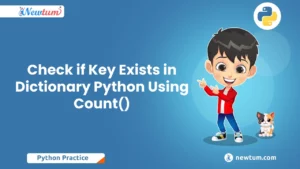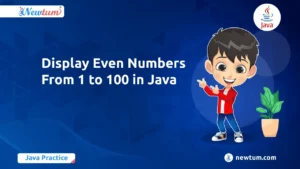In the world of coding, understanding a ‘C# Boxing and Unboxing Example’ can be a game-changer for many programmers. Have you ever stumbled upon these concepts and wondered how they work? You’re not alone! Boxing and unboxing are essential in handling value and reference types, bridging the gap between them. So, if you’re eager to enhance your C# skills and apply them effectively, stick around as we dive into these concepts and make them crystal clear!
What is Boxing in C#?
Boxing is the process of converting a value type (like int, float, bool, etc.) into a reference type, specifically into an object. This allows value types to be treated like objects, which is useful in scenarios like storing values in collections that deal with objects.
Why is it needed?
Because some .NET features (like non-generic collections or polymorphism) work only with reference types.
How Boxing Works:
When a value type is boxed, the system:
- Allocates an object on the heap,
- Copies the value into the newly created object.
Boxing Example:
int number = 100; // value type object obj = number; // boxing Console.WriteLine(obj); // Output: 100
Here, number (an int) is boxed into the object type obj.
What is Unboxing in C#?
Unboxing is the reverse of boxing — it extracts the value type from the object it was boxed into. This must be done carefully because improper casting leads to runtime exceptions.
Important Rules:
- You must unbox to the correct type.
- Unboxing requires an explicit cast.
Type Safety:
If you unbox an object to the wrong type, it will throw an InvalidCastException at runtime.
Unboxing Example:
object obj = 100; // boxing int number = (int)obj; // unboxing Console.WriteLine(number); // Output: 100
Here, the object obj is unboxed back to an int.
If we tried double d = (double)obj; — it would throw a runtime error.
C# Program to Demonstrate Boxing and Unboxing
csharp
using System;
namespace BoxingUnboxingExample
{
class Program
{
static void Main(string[] args)
{
int number = 123;
// Boxing
object obj = number;
// Unboxing
int unboxedNumber = (int)obj;
Console.WriteLine("The boxed number is: " + obj);
Console.WriteLine("The unboxed number is: " + unboxedNumber);
Console.ReadLine();
}
}
}
Explanation of the Code This simple C# code example revolves around the concepts of boxing and unboxing, which occur when value types (like integers) are converted to reference types (such as objects), and vice versa. Let’s break it down step by step:
-
- The program starts by defining an integer variable, `number`, which is assigned the value 123.
-
- The next step, called boxing, involves storing the integer `number` into an object `obj`. This means allocating memory in the heap and copying the value of `number` into that memory. Essentially, you’re wrapping the value type in a reference type.
-
- Later, unboxing occurs. Here, the object `obj` is cast back to an integer type and stored in a variable called `unboxedNumber`. This is like extracting the original value from the reference type container.
-
- The console displays both the boxed and unboxed numbers to verify the correctness of these operations.
Output
The boxed number is: 123
The unboxed number is: 123Real-World Applications of C# Boxing and Unboxing
Now, let’s see how C# Boxing and Unboxing is not just an abstract concept but a practical tool used by companies in the real world. Below is an ordered list of scenarios where businesses apply boxing and unboxing effectively.
Data Storage and Retrieval in Databases: Companies often need a way to store and retrieve generic data types in a database. By boxing value types into objects, it’s easier to interact with database systems that require objects, ensuring compatibility and flexibility in data handling.
User Interface Development: In scenarios where user interface elements expect object types for dynamic controls, brands might use boxing to pass these elements seamlessly. This is particularly useful in developing software where the UI components have to handle various data types and need converting.
Interoperability Between Legacy Systems: Some companies have legacy systems that were built with older technologies expecting object data types. Through boxing and unboxing, these companies can ensure their modern applications, written in C#, communicate effectively with older systems.
Streamlined Code Maintenance: In large-scale enterprise applications, boxing can help streamline code maintenance by allowing developers to write generic methods and classes that work with any data type, saving time and reducing complexity.
Quick Quiz Challenge
- What is boxing in C#?
1. Converting a value type to a reference type
2. Declaring a new object
3. A method of threading - What is unboxing in C#?
- 1. Storing value type in a stack
- 2. Converting reference type back to value type
- 3. Removing variables
- When does boxing occur?
When a value type is assigned to an object
When an object type is create
When a string is concatenated - Which type of conversion is boxing?
- 1. Implicit conversion
- 2. Explicit conversion
- 3. Narrowing conversion
-
- Is unboxing an explicit conversion?
1. Yes
2. No
3. Sometimes
- Is unboxing an explicit conversion?
With our AI-powered csharp online compiler, you can instantly write, run, and test your code with ease. It simplifies your coding journey by analysing errors and offering real-time suggestions. Experience seamless coding while getting insightful feedback, all thanks to state-of-the-art AI capabilities. Happy coding!
Conclusion
Completing the ‘C# Boxing and Unboxing Example’ enhances your understanding of data type conversions, empowering you with practical skills. Dive into hands-on coding and feel accomplished. For more on programming languages like Java and Python, check out Newtum. Give it a go, and happy coding!
Edited and Compiled by
This article was compiled and edited by @rasikadeshpande, who has over 4 years of experience in writing. She’s passionate about helping beginners understand technical topics in a more interactive way.



